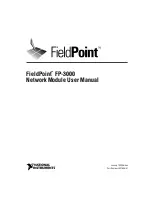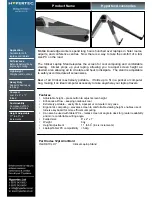
17
18.6
TAIL UNIT
The Tail Unit should be checked as per the maintenance schedule and visually assessed to ensure
that it is functioning correctly and that the drum is clean with no excessive build-up of material around
the drum and that it is running in the bearings correctly. This can be accessed by removing the tail
drum guard (and the hopper if possible). Ensure that the tensioning stud bars each side are clean
and operational and that the side clamps are tightly secured. The tensioning stud bars will benefit
from a periodic light greasing with a multipurpose grease.
18.7
JOINT CHECK
All conveyor section connecting bolts should be checked and tightened periodically as per the
maintenance schedule.
18.8
MOTOR & ELECTRICS
Carry out a regular visual check to ensure there are no obvious signs of wear or damage to the motor
and supply cables. Any wear or damage in these areas should be reported immediately to a
competent electrician to carry out further investigation and any necessary repair work.
18.9
GEARBOX UNITS
All gearboxes supplied are maintenance free as they are lubricated for life at the factory and the oil
should not require changing. Visually inspect for damage.
18.10 BEARINGS
All external bearings need to be inspected for any excessive wear and that they are secure to the
conveyor frame and in clean condition. All these bearings will need grease lubrication regularly. The
manufacturer’s recommended lubricant is a high quality lithium based grease of 2-3 consistency.
They will need to be checked as per the maintenance schedule.
18.11 COVERS
Top covers should be checked periodically as indicted in the maintenance schedule. It is important
that all fixings are securely tightened
18.12 BOTTOM COVERS
Bottom covers should be checked periodically as indicated in the maintenance schedule. Remove
the bottom covers as required to remove excess material that might have built up and been carried
around by the returning belt. It is important that all fixings are securely tightened after refitting the
covers.
18.13 BELT TRACKING
Belt tracking should be visually checked at both ends of the conveyor to ensure that the belt is
running in the centre of the drums and not running to one side more than the other. You may need
to remove any objects that obstruct your visual inspection. If the belt is running out of alignment
follow the belt tracking procedure as set out on pages 14 & 15
18.14 BELT TENSIONING
To check the belt tension on you conveyor, first make sure that there is no load on the belt. Ensure
that you are situated in a safe position prior to starting the conveyor to inspect the belt running and
that you are able to visually see the head drive drum on start-up of the conveyor. On start-up, first
check that there is no belt slippage on the drum. If the belt is not slipping, then repeat this check with
the belt running under its normal working load. Should you experience any slipping of the belt at the
drive drum, then increase the tension at the tail drum end by following the tracking and tensioning
procedure as set out on pages 14 & 15
18.15 HOPPER
Inspect regularly as per the maintenance schedule to ensure that there is no material build up in the
hopper and its surrounding area. Check thoroughly that there is no damage to the hopper. Clean
and remove material as necessary. Ensure all fixings are secure and tightened.






































